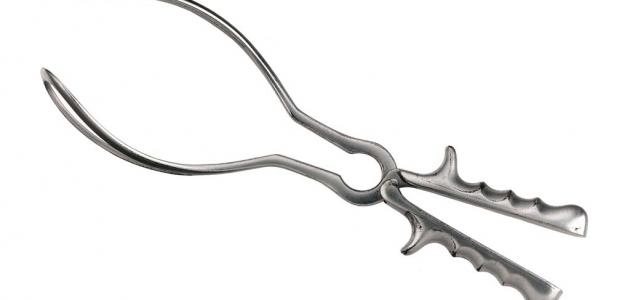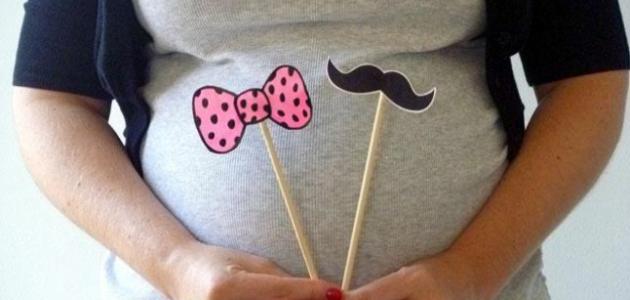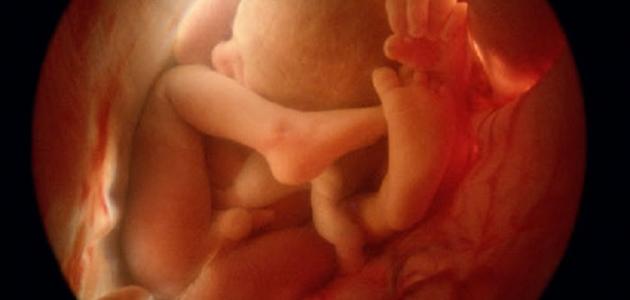Contents
Fetal death
Fetal death , stillbirth (stillbirth), fetal death , death of a fetus inside the womb, death of a fetus inside its mother's womb, death of a fetus in the womb, or death of a fetus; All are terms that mean the loss of the fetus during or before childbirth as a result of his death, and when talking about the death of the fetus or the loss of pregnancy, two similar terms emerge, namely: Miscarriage , stillbirth or stillbirth, and these two terms differ at the time of the occurrence of the loss of the fetus, as the first expresses the loss of the fetus before reaching the twentieth week of pregnancy, and the last expresses the loss of pregnancy after reaching the twentieth week of pregnancy . [1]
Signs of fetal death after the twentieth week
The death of the fetus may not be accompanied by the occurrence of any symptoms, [2] but when the mother stops feeling the movements and kicks of her fetus, she must contact the specialist doctor or go to the emergency room immediately, as lack of awareness of fetal movements is the most common symptom of fetal death in the womb. other symptoms will be a statement later, and when access to medical care section is prescribed health care provider to conduct screening and ultrasound to detect the pulse of the fetus and see if the baby 's heart is still beating or it has stopped, [3] as Getting medical care sooner saves the life of the fetus and reduces the risk of death. [4]
In order for the pregnant woman to be able to monitor the changes in the movement of the fetus, she must be well aware of the patterns of the movements of her fetus, in an attempt to detect problems as soon as possible in the event that they occur. [5] As the feeling of the fetus’s movement begins between the sixteenth and twenty-second weeks usually, and as the pregnancy progresses, its movements become familiar to the mother and bear a certain pattern. The fetus often moves more during hours of rest or before bed, or during some activities such as bathing, or Sitting on the couch with the feet raised, or while eating and drinking, and by the twenty-sixth week of pregnancy, the fetus’s movements become more regular and easier to monitor. It is worth noting that fetuses who suffer from certain problems move less to conserve energy, [4]In general, doctors advise women who have passed the twenty-eighth week of pregnancy to track the number of kicks of their fetus at least once a day, and in the event that an abnormal number of kicks is detected, the doctor advises then to conduct a specific test to detect the health and safety of the fetus. [2]
In fact, the symptoms associated with the death of the fetus may differ from one woman to another, and it is worth noting that some symptoms may be similar to the symptoms of infection in other cases, and therefore consulting a doctor is the best procedure that can be followed when suspicion of the death of the fetus, and among the most prominent symptoms that may indicate the occurrence of death A fetus is what follows: [6] [7]
- The absence of fetal movement or pulse when monitoring them with an ultrasound machine, and this means that the final diagnosis of the condition is the death of the fetus.
- Absence of a fetal heartbeat when trying to hear and detect it using a stethoscope or a Doppler ultrasound device .
- Vaginal bleeding or stains of blood, and this condition may indicate a problem with the placenta, without the fetus being hurt.
- The fetus’s movement pattern has changed or decreased.
- Abnormal vaginal discharge , and may not be associated with fetal death; It may indicate the presence of an infection or the fluid surrounding the fetus coming out early.
- Symptoms similar to the case of pre - eclampsia ; Such as severe headaches, blurred vision including seeing flashes of light, sudden swelling in the feet, ankles, hands, and face, and a feeling of pain below the ribs of the rib cage.
- Severe abdominal pain or cramps, and this may indicate a problem with the placenta or the possibility of premature labor, and does not necessarily mean the death of the fetus.
Signs of fetal death before the twentieth week
Abortion is accompanied by the emergence of several signs and symptoms vary from one woman to another, may also vary from abortion to another with the lady in the event of multiple abortion [8] , and abortion can be expected in the absence of symptoms of pregnancyThe usual; Such as feeling tired and sore breast when touching it, and as for vaginal bleeding, it is the most common symptom of miscarriage, which varies from being spots or secretions ranging from light brown to intense red or blood lumps, and in most cases of miscarriage the woman suffers from profuse bleeding accompanied by blood lumps similar to the menstrual cycle Heavy, and in some cases, the bleeding accompanying the abortion is very severe, and the bleeding may last from a few days to two weeks or more, to settle gradually during that time, and it is worth noting that light vaginal bleeding is relatively common during the first trimester of pregnancy, and its occurrence may not be associated By abortion in many cases, [9] [10] By light bleeding we mean bleeding that does not last for more than three days, and does not require changing more than one sanitary pad during the hour. Otherwise, the doctor must be consulted immediately. [8]
Among the other symptoms that may accompany a miscarriage, we mention the following: [11] [12]
- A high temperature that coincides with any of the other symptoms of a miscarriage.
- Weight loss .
- Vaginal secretions with clots.
- Feeling faint or light-headed.
- Contractions, or contractions.
- Weakness and general fatigue.
- Lower back pain, dull or severe abdominal pain, or abdominal cramps. [13]
Symptoms that warrant medical intervention
In general, the woman is encouraged to visit the doctor in the event that any of the symptoms described above appear, [12] and the medical care that the woman at risk of the death of her fetus must receive is classified into a medical consultation by consulting or contacting the doctor, and immediate medical intervention, depending on the symptoms that she suffers. Including the woman, and the symptoms that require medical intervention can be explained as follows: [14] [15]
- Symptoms that require immediate medical intervention: They include the following:
- Loss of consciousness .
- Severe vaginal bleeding.
- Severe pain in the abdomen or pelvis.
- Symptoms that require a visit to the doctor: In the event that it is not possible to contact the doctor, the nearest hospital or maternity clinic should be visited, and these symptoms include the following:
- The emergence of one of the previously mentioned signs of preeclampsia.
- High temperature.
- Vaginal bleeding.
- Lower back pain or a feeling of constant pressure in the pelvic area.
- Intense or regular contractions for an hour, whether accompanied by pain or not, and by regular contraction we mean eight or more contractions within one hour, or four or more contractions within twenty minutes despite changing position and drinking fluids.
- A sudden discharge of liquid from the vagina.
- The fetus moves in a different pattern or a reduced sense of movement, which raises suspicion that the child has stopped moving.
- Take a strong blow, especially on the stomach.
- Severe nausea and vomiting that affect a woman's ability to eat and drink fluids.
- Swelling of the face, feet, or hands suddenly, or if the woman suffers from swelling of the legs accompanied by pain.
- Feeling that the pregnancy and the health of the fetus are not good.
- Foul-smelling vaginal secretions. [16]
References
- ↑ "What is Stillbirth?" , www.cdc.gov , August 29, 2019, Retrieved 1/6/2020. Edited.
- ^ A b Krissi Danielsson (March 05, 2020), "A Comprehensive Overview The Of Stillbirth of a" , Www.verywellfamily.com , Retrieved 1/6/2020. Edited.
- ↑ "STILLBIRTH" , www.marchofdimes.org , April, 2019, Retrieved 1/6/2020. Edited.
- ^ A b "Stillbirth Symptoms And Risks" , Www.diabetestalk.net , Retrieved 1/6/2020. Edited.
- ↑ "Stillbirth" , www.your.md , Retrieved 1/6/2020. Edited.
- ↑ "Stillbirth" , www.stanfordchildrens.org , Retrieved 1/6/2020. Edited.
- ↑ Evelyn Ferguson, Consultant (August 2022), "Stillbirth" , www.bupa.co.uk , Retrieved 1/6/2020. Edited.
- ^ A b Maria : Masters (4 Join Date : May, 2020), "Miscarriage And Pregnancy" , Www.whattoexpect.com , Retrieved 1/6/2020. Edited.
- ↑ "Symptoms" , www.nhs.uk , 1 June 2018, Retrieved 1/672020. Edited.
- ↑ "symptoms of miscarriage?" , www.patient.info , Retrieved 1/6/2020. Edited.
- ↑ Joseph Nordqvist (January 11, 2018), “Miscarriage: What you need to know” , www.medicalnewstoday.com , Retrieved 1/6/2020. Edited.
- ^ A b Nivin by Todd, MD (July 27, 2019), "Pregnancy And Miscarriage" , the www.webmd.com , Retrieved 1/6/2020. Edited.
- ↑ "Miscarriage" , Www.medlineplus.gov , Retrieved 1/6/2020. Edited.
- ↑ "What is a stillbirth?" , www.pregnancybirthbaby.org.au , July 2018, Retrieved 1/6/2020. Edited.
- ↑ "Stillbirth (Before Delivery): Care Instructions" , myhealth.alberta.ca , Retrieved June 24 , 2020 . Edited.
- ↑ "Miscarriage" , www2.hse.ie , 11/20/2018 , Retrieved 1/6/2020. Edited.






